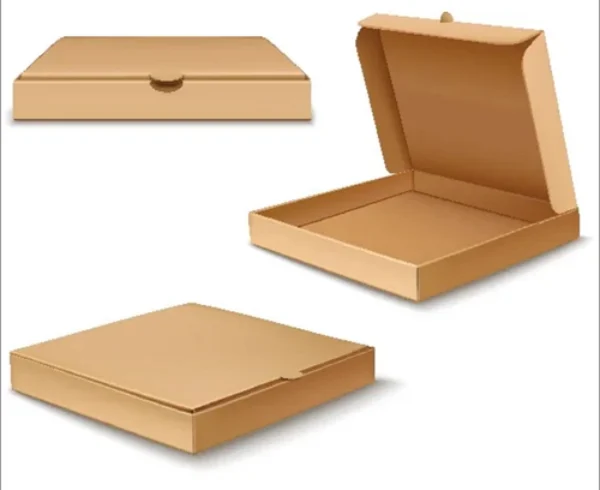Useful Tips for Shipping Fragile Items Using Corrugated Boxes

Shipping fragile items can be a daunting task, as they require extra care and protection to ensure they arrive at their destination intact. Corrugated boxes are commonly used for shipping fragile items due to their strength and durability. To help you ship your fragile items safely, here are some useful tips for using corrugated boxes:
- Choose the Right Corrugated Box: Selecting the appropriate box size and strength is crucial for shipping fragile items. Look for boxes specifically designed for shipping fragile items or opt for corrugated boxes with high burst strength or edge crush test (ECT) ratings. These ratings indicate the box’s ability to withstand pressure and impact during transit.
- Use Double Wall Corrugated Boxes: For extremely fragile items or items of high value, consider using double-wall corrugated boxes. These boxes provide an extra layer of protection due to their added strength and thickness. They are more resistant to compression and can absorb shocks during transportation.
- Wrap Fragile Items Individually: Each fragile item should be wrapped individually with suitable protective material. Bubble wrap, foam, or packing peanuts are excellent choices for cushioning delicate items. Make sure to wrap each item generously to create a thick layer of cushioning that will absorb impacts during transit.
- Provide Adequate Padding: After wrapping each fragile item, it’s essential to provide additional padding inside the corrugated box. Place a layer of packing material, such as bubble wrap or packing peanuts, at the bottom of the box to create a soft cushion. Then, carefully place the wrapped items in the box, making sure they don’t touch the box’s sides or each other.
- Fill Empty Spaces: Any empty spaces within the box should be filled with packing material to prevent the items from shifting during transit. This will help distribute the impact evenly and minimize the risk of damage. Use additional bubble wrap, packing peanuts, or foam inserts to fill in any gaps or voids.
- Seal the Box Securely: Properly sealing the corrugated box is crucial to prevent it from opening during transit. Use strong packing tape to seal all the seams and edges of the box. Apply multiple layers of tape to reinforce the closure and ensure it remains intact throughout the shipping process.
- Label the Box as Fragile: Clearly label the box as “Fragile” or “Handle with Care” to alert handlers and shipping personnel about the delicate nature of the contents. Use bold, easily readable labels that stand out on the box. This will help ensure that proper attention is given to the package, reducing the likelihood of mishandling.
- Consider Double Boxing: For extremely fragile or valuable items, consider using the double boxing method. Place the padded and sealed corrugated box inside a larger box, providing an additional layer of protection. Use packing material to fill the space between the inner and outer boxes, creating a buffer zone that absorbs shocks and impacts.
- Choose a Reliable Shipping Carrier: Select a reputable shipping carrier known for handling fragile items with care. Research carriers that offer specialized services for fragile shipments, such as extra handling or fragile item insurance. Compare prices, reviews, and shipping options to choose the carrier that best suits your needs.
- Test the Packaging: Before shipping your fragile items, conduct a test by gently shaking the box to ensure there is no movement or rattling. If you hear any sounds or feel movement, open the box and add more padding to secure the items. This simple test can help identify any potential issues before sending the package.
- Insure Valuable Items: For valuable or irreplaceable items, consider purchasing insurance to protect against loss or damage during transit. Many shipping carriers offer insurance options, and it’s worth considering for peace of mind. Review the carrier’s insurance policies, coverage limits, and claim procedures to make an informed decision.
- Keep Records and Tracking Information: Maintain detailed records of the shipped items, including descriptions, values, and tracking numbers. This will help you keep track of your packages and assist in filing claims if any damage occurs during shipping. Save copies of receipts, invoices, and any communication with the shipping carrier.
- Monitor the Shipment: Regularly track the progress of your shipment online or through the carrier’s tracking service. This will allow you to stay informed about the package’s location and estimated delivery date. If you notice any delays or unusual updates, contact the shipping carrier promptly to address any concerns.
- Provide Clear Handling Instructions: If your fragile items require specific handling instructions, such as “This Side Up” or “Do Not Stack,” clearly mark them on the box. Use arrows and bold lettering to ensure the instructions are easily visible and understood by handlers. This will help minimize the risk of improper handling during transit.
- Request Signature Confirmation: If your fragile items are of high value or require extra security, consider requesting signature confirmation upon delivery. This ensures that the package is received by the intended recipient and reduces the risk of theft or mishandling.
By following these useful tips, you can enhance the safety and protection of your fragile items when shipping them using corrugated boxes. Remember, taking the time to properly pack and label your packages can significantly reduce the risk of damage during transit and ensure your items arrive in excellent condition.




Leave a Comment